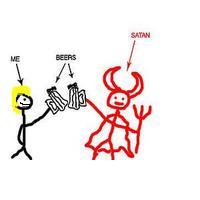So, I was listening to an Astronomy Cast recently about quasars. Here's the thing--I never really understood them. Typically people say something like, "Well, no one does." And this is on the happy occasion that I'm talking to someone who knows what a quasar is, vaguely.
Yes, I know it stands for "quasi-stellar object" or, originally, "quasi-stellar radio srouce" because it was first discovered by radio telescopes in the 1950's and the energy looked like a star but it was red-shifting like a galaxy. The degree of red shift indicated it was moving away from us very fast. Now they are considered high energy galactic nuclei. Wikipedia says that a galaxy hosting an AGN (active galactic nucleus) gets its radiation from the supermassive black hole at its center (I also learned that astronomers originally referred to these as "angry monsters." I like it.)
Wait, does this mean the Milky Way is an active galaxy? We have a supermassive black hole too. NASA says no. An active galaxy is any that emits enormous amounts of energy (xrays, gamma radiation, etc.) caused by an object at its center. I guess we don't emit enough. I expect that's a good thing, to understate.
So, quasars and black holes aren't the same thing, y/y? Correct. The current thinking is a quasar has a spinning black hole at its center. This site explains it well. The intense luminosity comes from gases in the accretion disc. All of the energy in a galaxy added up would equal one of the brighter quasars. They say a large star would have had to collapse to create its black hole.
Ok, on to something completely different. Nicaea. I heard it mentioned recently in a story about the Crusades and I realized I didn't know wtf it actually is. Greece? Turkey? Syria? It's Turkey, Western Turkey. The town is now called Iznik. It was the capital of the eponymous Empire. One of the Byzantine emperors hid there during the Fourth Crusade-the one where Rome illogically decided to attack Constantinople in 1204. The Catholics then formed the Latin Empire which lasted until 1261. The Byzantines returned to power Michael VIII but Byazntine fell to the Turks under the rule of Constantine XI.
All good preparation for when I eventually get around to reading Lost to the West.
In A Corpse in the Koryo, Inspector O meets a Finnish/Chinese prostitute named Lena who is also an intelligence operative living in North Korea. The obvious question as to why the hell anyone would live in North Korea on purpose is never addressed. But she mentions growing up on the shores of Lake Keitele in Finland. It's a lake in what Wikipedia says is central Finland (it looks like southern Finland to me.) Alas, I couldn't find anything really interesting about it but it's pretty. Here is a painting of it by a (surprise!) Finnish painter from 1905. The blue of the Scandinavian Cross in the Finnish flag is said to represent the many lakes of Finland.

No comments:
Post a Comment